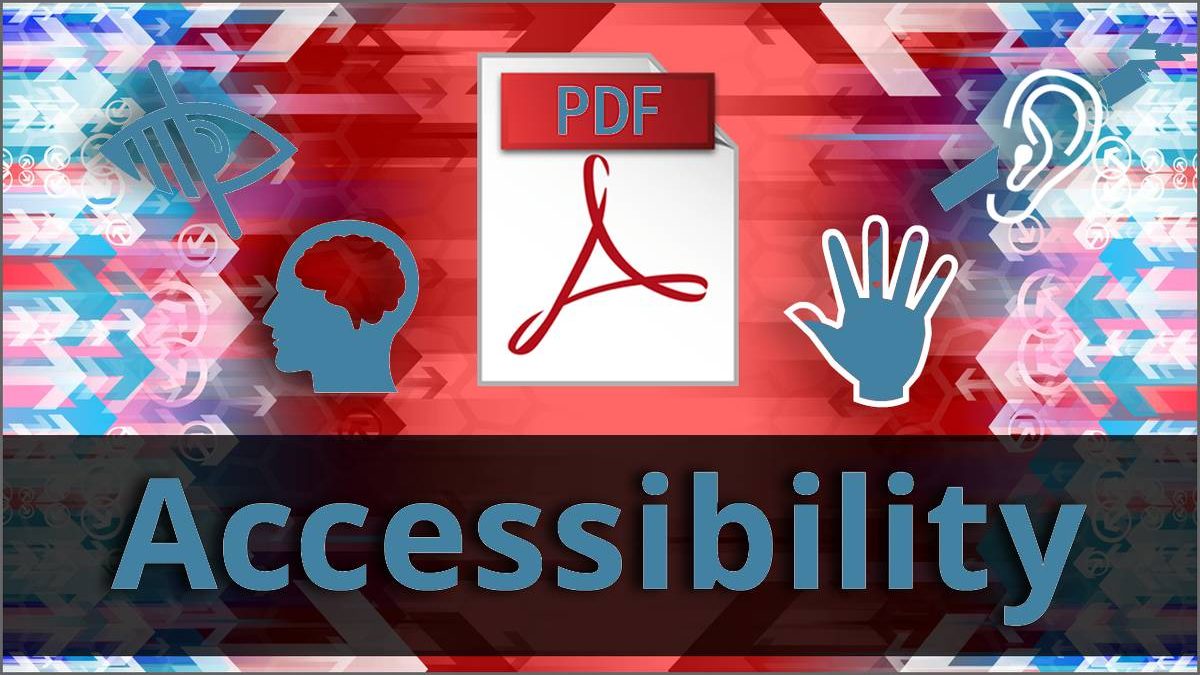Whether you run a business, a school, or a nonprofit, chances are you might be storing, gathering, and disseminating information through PDF documents. The PDF format is popular because it allows users to view it through different devices and operating systems while preserving content formatting. However, of the millions of PDF documents generated worldwide annually, only a handful are fully accessible – that is, usable by individuals with disabilities.
This blog will discuss PDF accessibility and why you should make your PDF documents accessible. We will also guide you through a checklist that will significantly help you improve your PDF accessibility posture.
Table of Contents
What is PDF accessibility?
You might have heard of website accessibility, which refers to a set of practices that help web designers and developers build websites that people with disabilities can use effectively and efficiently. PDF accessibility follows pretty much the same principles as web accessibility, such as support for assistive technology like screen readers, organized content formatting, and document elements that are optimized for use by users with visual impairments.
While you might be aware of the Americans with Disabilities Act (ADA) and how it affects physical businesses, you might be surprised to learn that it also covers both web and PDF accessibility. To be precise, the ADA is silent about digital accessibility, but recent lawsuits have led to most legal experts concluding that it covers all accommodations, including websites. For PDF documents, complying with ISO 14289-1 (otherwise known as PDF/UA-1) will help your organization stay in the clear.
Why should you make your PDFs accessible?
As mentioned in the previous section, businesses with inaccessible websites and documents are vulnerable to ADA-related lawsuits. The number of these lawsuits is expected to exceed 4,000 in 2023 alone, most of them filed by plaintiffs with disabilities and law firms who specialize in accessibility law. The complainants include some of the largest companies in their respective industries, and many of them are choosing to settle instead – a clear sign that businesses still need to work hard on improving their accessibility. Making your PDFs accessible is a huge step toward ensuring that everything you put online complies with the ADA.
Second, accessibility makes good business sense. Individuals with disabilities are an underserved segment of the population, and making your website and documents accessible will help you position your business for success with this market. Taking accessibility seriously can result in lower bounce rates and higher customer loyalty.
A quick PDF accessibility checklist
PDF accessibility does not need to be complicated. As much as you would like to fully comply with PDF/UA-1 standards, ticking off the items below will help you improve your PDF accessibility significantly.
1. Headings and subheadings
Adding headings and subheadings to your text will help you create a logical structure within the content, helping visually impaired individuals who use screen readers to navigate the document.
2. Color contrast
Your document should be readable by everyone, including individuals with visual impairments. Applying a high-contrast color theme, such as black text on an off-white background, will make the text stand out.
3. Plain language
While there are certain documents (such as scientific papers or legal documents) that will require complicated language, using plain language will make your documents more readable and accessible to users with cognitive and visual impairments.
4. Alt text
All images must be accompanied by alt text, which is a description of whatever is being depicted in the image. This description should be detailed enough for a screen reader user to understand the context and content of the image. For example, alt text for a chart that shows sales figures should include details about the numbers instead of “chart that shows sales”.
5. Accessible forms
Many business use PDF forms for orders, feedback, and requests. Accessible PDF forms include fields with descriptions, detailed instructions, and form controls such as radio buttons or checkboxes that can be used with keyboard shortcuts.
PDF accessibility: More than a mere option
Implementing PDF accessibility is no longer optional. Just like accessible website, accessibility PDFs don’t just protect your business from potential ADA lawsuits; they also add real value to your business by allowing it to serve individuals with disabilities more effectively. By organizing your text with headings and subheadings, applying a high-contrast theme to your documents, using simple language for your content, adding alt text to images, and adding support for keyboard navigation to online forms, you ensure that your PDFs are accessible and inclusive to everyone, regardless of their disabilities.

